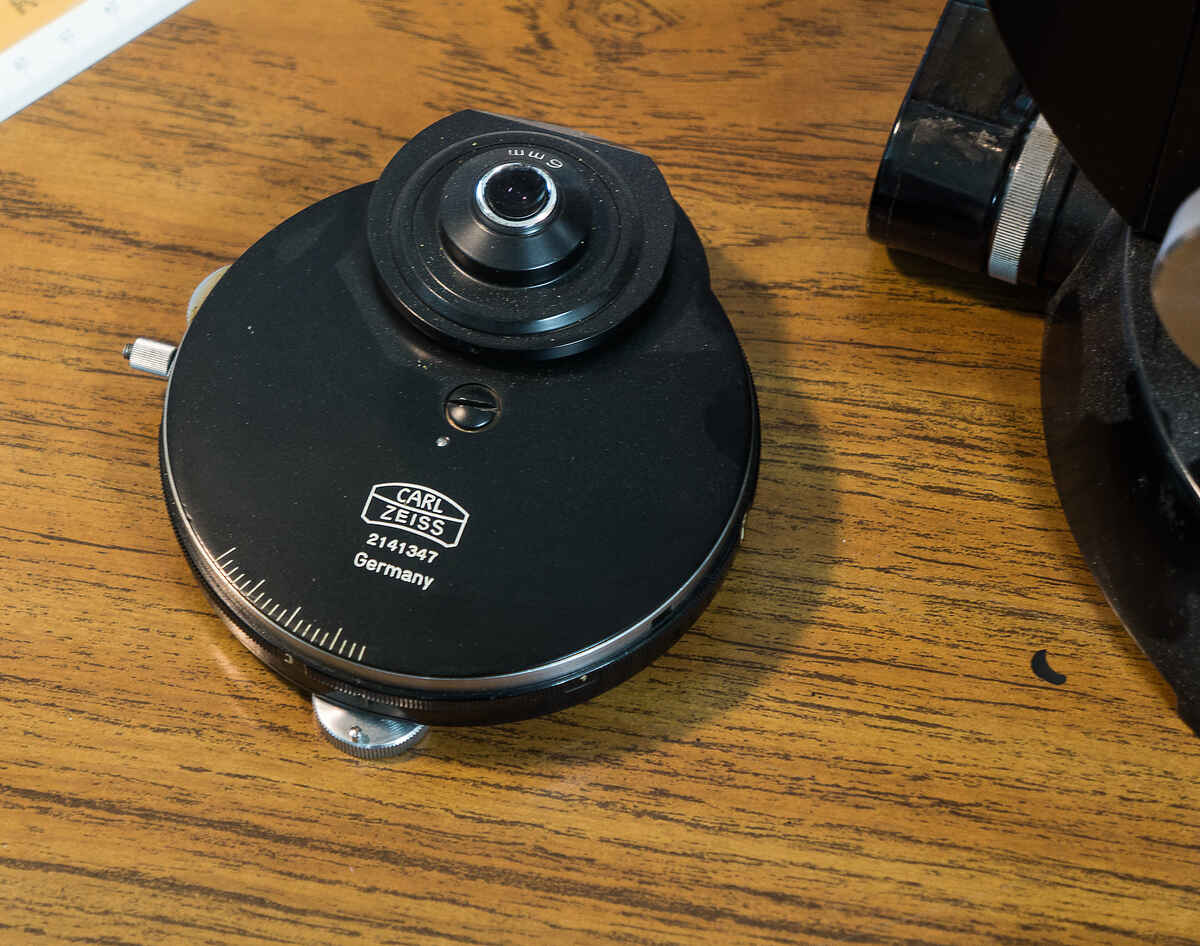 Some indications are that it may be a "Zeiss Standard WL".
It is black enamel -- on brass I am told!
In the Black Zeiss Standards there was the Junior, GFL and WL.
Some indications are that it may be a "Zeiss Standard WL".
It is black enamel -- on brass I am told!
In the Black Zeiss Standards there was the Junior, GFL and WL.
eyepieces Kpl 8x Objectives are marked: Plan 2,5/0.08 160/- 10/0.25 160/- Ph1 Neofluar 40/0.75 160/0.17 Ph2 Neofluar 100/1,30 Oel 160/- Ph3 The Ph1 .. Ph3 markings are in red -- what is this all about? Then there is the big removable condenser gadget. It has a variety of adjustments I wouldn't dare monkey with, and the big disk rotates to settings marked D J 1 2 3 4 5 (i.e. 7 positions are possible). Above the objective turret is a disk that rotates, that is marked: PH 1.0 1.6 2.5 (4 positions).I learn from a listing for a Standard WL (which it describes as a "Research Microscope" that the plate above the objectives is what they call an "Optovar". The same listing describes the condensor disk as follows.
Optovar: This device fits in between the binocular head and the stand and provides magnification factors of 1.0, 1.25, 1.6 and 2.0. There is also a phase (PH) position which inserts a Bertand lens into the light path for alignment of the phase plates in the phase condenser.
(Mine apparently has only 3 magnification factors, and different, as listed above).Condenser: The microscope is equipped with an aplanic, NA = 1.4 condenser that includes phase 2 and 3, brightfield (J) and darkfield (D) positions. There are controls for adjusting the iris aperture and the centration of the phase plates.
Mine has Phase 1 through 5, along with D and J.

Tom's microscope pages / tom@mmto.org